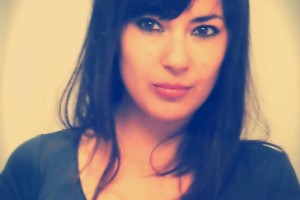If you’re going to the prestigious Magasin (The National Center for Contemporary Art in Grenoble) until the 26th of July, you can visit an art show that takes the form of a retrospective for Dan Prejovschi’s drawings made between 1991-2014, as well as a few works made especially for this event. Called “Pression Liberté Expression”, the exhibition is rich with significance due to its geometrical placement in the Grenoble area, the starting point of the French Revolution. The one who had the initiative for this event is the independent curator Hilde Teerlink who is temporarily replacing Yves Aupetitallot, Magasin’s director.
Whatever you hear about a notorious artist is usually tautological or fake and it’s rarely worth believing. In Perjovschi’s case, things get a bit more complicated due to his artistic technique: he uses simple, even modest instruments and his works are ephemeral and send a message that is easy to understand. What can a critic say when faced with such evidence and success?
The drawings made with a marker or chalk on feasible surface is obviously a choice that coincides with the artist’s orientation towards left-wing criticism. The aesthetic register in which Perjovschi activates is, of course, irony. For Hegel, irony is a weak kind of aesthetics because its author has to be addicted to reality: you can only be ironic about situations that actually occurred, irony is an act of disdain towards a universe that also fuels it. Without its object of disdain, irony could not exist. This Hegel perspective perfectly illustrates the modern concept of the work of art: the aesthetical object must distinguish itself from the “contingent”, it must have a kind of autonomy from the “real” and it must transcend it. Irony needs an object to report to so its autonomy is profoundly compromised, according to modern world views.
But in the postmodern world, the work of art goes through many transgressions and the artist is not interested in distinguishing the real from art. With ready-made the “contingent” is invited to integrate itself in the art world. Perjovschi’s works are not just ephemeral chalk sketches on the walls of art institutions because these sketches layer over an infinite ready-made: the flux of current events. His designs always have two levels of semantics: a hint at the media perception on social and political issues and the irony of this perception. Sometimes a third level is added: the artist communicates a social and/or political promise, he wants to go beyond the artistic sphere and make a difference with his powerful messages. This way, he returns to the “contingent” that was initially inserted in the sketches and directly acts on it.
Frequently invited to draw on the walls of art institutes all over the world, Perjovschi seems to have doubled the ironic international media agenda by rapidly commenting on any news. Perjovschi’s work is just that, a continuous graphical flux that mirrors the rhythm of the international media. His artistic project is that much braver when you notice that the viewer is not meant to remain still in front of an art work, but to heavily advance within the layers of significations within the work. Art that is accessible only to the elite group of the initiated is a modern and bourgeois trait, whereas Perjovschi remains coherent to his left-wing orientation with his schematic, transparent designs.
The artist that managed to make a name for himself in Romania after 1989 with his graphic design work at ”Magazine 22” uses his drawings on real or virtual (his facebook page) walls to communicate with the international, heterogeneous public. In this uninterrupted flux of art and social issues, art shows at international institutions have an important role. These institutions “freeze” some of these designs, they temporarily become “museum pieces” so that they can be witnessed on the walls. Although Perjovschi refuses to be a part of the art market – his works cannot be sold – his works travel through museums and gain legitimacy and notoriety. Ironically, most of the time these designs question the very art institutions that hosts them, or the relationship between the artist and curator.
The huge interior of the Grenoble center, sectioned into many rooms, was filled with sketches in record time, just eight days. The themes are familiar: immigration problems, various political conflicts, deficiencies in the capitalist system, what the art world values, etc. A special side note of this exhibition is the “Transparent Retrospective” ensemble, 26 panels of glass that illustrate the artist’s best work, places in the middle of the central room of the space, under a glass ceiling that generously offers plenty of natural light.
What is most interesting about this event, as well as any other Perjovschi art show, is that he manages to criticize the art system in such a transparent manner, yet still exhibit his works in its midst by using a balanced language of words and images that is sought after by elite art institutions and at the same time accessible to the uninitiated public.
Dan Perjovschi, “Pression Liberté Expression” is at Le Magasin (The National Center for Contemporary Art in Grenoble) until July 26, 2015.
POSTED BY
Lucia Popa
Lucia Popa is a PhD researcher at Ecole des Hautes Etudes en Sciences Sociales (Centre des Recherches sur l’Art et le Langage) in Paris and teaches at Science Po Lille. She earned a PhD degree in So...

Comments are closed here.